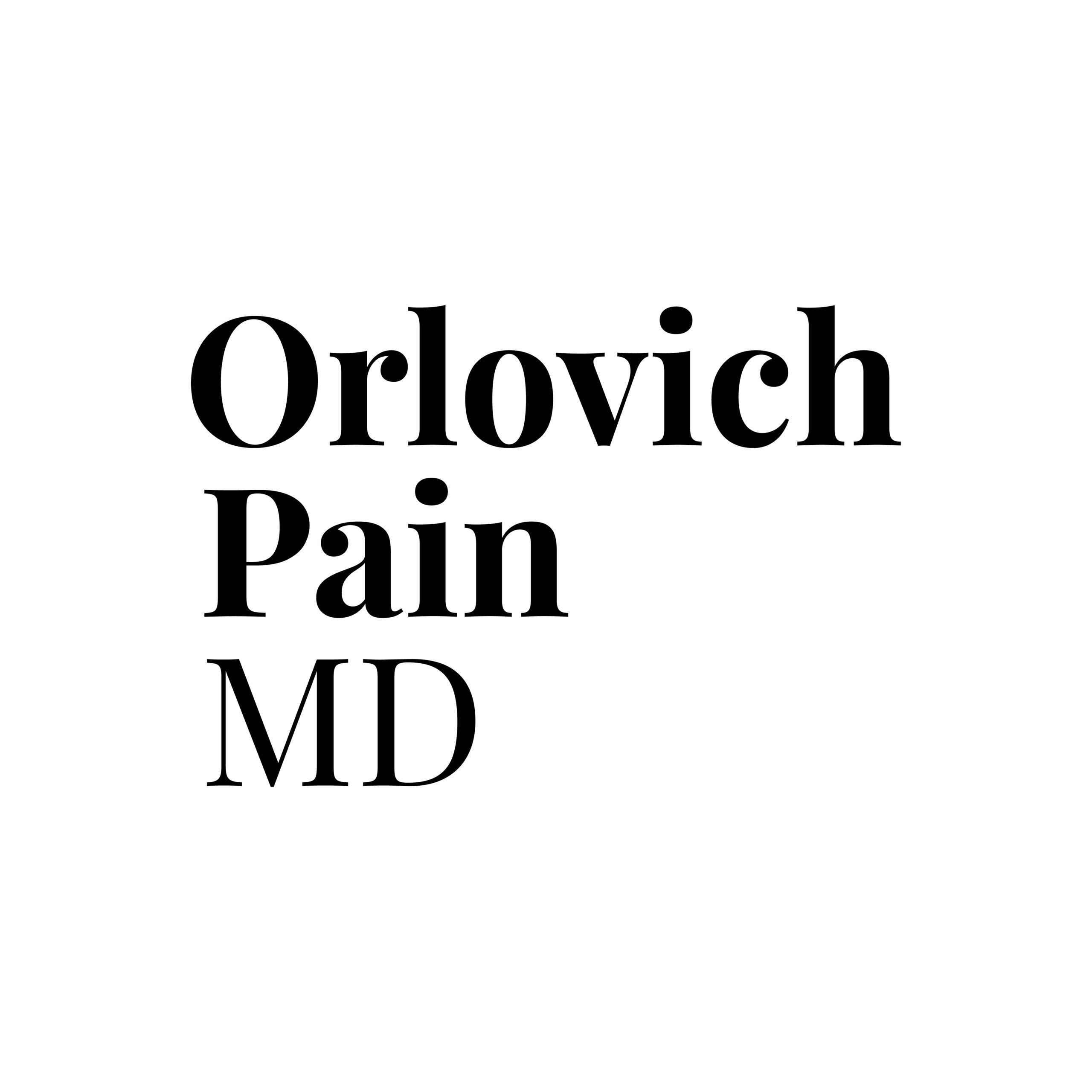A. Brief Overview
Chronic pain is a pervasive issue affecting millions worldwide, necessitating comprehensive and effective pain management strategies. The key to successful pain management often lies in the patient’s active involvement and preparation for clinic visits. This blog post aims to guide individuals in maximizing their pain clinic visits by emphasizing the importance of proactive engagement and effective communication with healthcare providers.

B. Statistics on Chronic Pain
To underscore the gravity of the issue, let’s delve into some statistics on chronic pain. According to the World Health Organization (WHO), an estimated 20% of adults worldwide experience chronic pain, significantly impacting their quality of life. Understanding these statistics helps individuals recognize the broader societal implications of chronic pain and emphasizes the urgency of seeking quality pain management services.
Understanding Your Pain
A. Self-Reflection
Self-reflection is a fundamental step in understanding and managing chronic pain. Encouraging individuals to introspect about the nature, triggers, and patterns of their pain fosters a deeper awareness that can be crucial during clinic visits. This self-awareness provides a foundation for effective communication with healthcare providers.
B. Keeping a Pain Journal
Keeping a pain journal is a practical tool for patients and healthcare providers alike. This journal, documenting daily experiences, triggers, and pain intensity, serves as a tangible record during clinic visits. Patients can share this valuable information with their healthcare team, facilitating a more accurate diagnosis and personalized treatment plan.
Researching Your Condition and Treatment Options
A. Gathering Information
Empowering patients with knowledge about their specific pain condition and available treatment options is empowering. Reliable sources such as medical journals, reputable healthcare websites, and professional organizations can provide valuable insights. Informed patients are better equipped to engage in meaningful discussions with their healthcare providers.
B. Questions to Ask
Providing a list of pertinent questions for patients to ask their healthcare providers encourages proactive engagement. Questions may include inquiries about the specific diagnosis, potential treatment options, expected outcomes, and potential side effects. This approach fosters a collaborative relationship between patients and healthcare providers.
Preparing for the Appointment
A. Organizing Medical Records
Organizing medical records is a crucial step in streamlining communication between patients and healthcare providers. Having a comprehensive overview of previous diagnoses, treatments, and test results enables healthcare providers to make informed decisions and tailor treatment plans to individual needs.
B. Creating a List of Medications
Maintaining an accurate and up-to-date list of medications is essential for patient safety. This list should include details such as drug names, dosages, and frequencies. This information is indispensable for healthcare providers to avoid potential drug interactions and design a treatment plan that complements the existing medication regimen.
C. Setting Realistic Goals
Encouraging patients to set realistic goals for their pain management journey is essential for aligning expectations. These goals could include pain reduction targets, improved functionality, or enhanced quality of life. Clear communication of these goals to healthcare providers ensures a collaborative approach and facilitates the development of a tailored treatment plan.
During the Clinic Visit
A. Open Communication
Open communication is the linchpin of effective pain management. Patients should feel comfortable expressing their pain experiences, concerns, and goals during clinic visits. This open dialogue allows healthcare providers to gain a holistic understanding of the patient’s condition, fostering a more personalized and effective treatment approach.
B. Actively Participating in Discussions
Active participation during clinic visits goes beyond simply providing information; it involves engaging in discussions about treatment options. Patients should be encouraged to ask clarifying questions, provide feedback on previous treatments, and express any preferences or reservations they may have. This collaborative approach strengthens the patient-provider relationship and enhances the overall quality of care.

Post-Visit Reflection and Follow-Up
A. Reflecting on the Visit
After the clinic visit, patients should take the time to reflect on the information gathered and decisions made. Reflecting on the visit helps individuals assess their understanding of the proposed treatment plan and identify any lingering questions or concerns. This reflective practice serves as a foundation for ongoing communication with healthcare providers.
B. Following Up with Additional Questions
Patients should be reassured that their engagement doesn’t end with the clinic visit. Encouraging individuals to follow up with additional questions or concerns reinforces the idea of continuous communication. This post-visit dialogue ensures that patients remain informed and actively involved in their pain management journey.
Importance
Efficiently preparing for a pain clinic visit holds paramount importance in ensuring effective care and positive patient outcomes. Several key factors underscore the significance of this preparation:
- Enhanced Communication:
- Reference: Eccleston, C., & Crombez, G. (2007). Advancing psychological therapies for chronic pain. F1000 Medicine Reports, 7, 66.
- Explanation: Open communication between patients and healthcare providers is crucial for effective pain management. Maximizing preparation for a clinic visit enables patients to express their experiences, concerns, and goals, fostering a more collaborative and understanding relationship with healthcare providers.
- Informed Decision-Making:
- Reference: Barry, M. J., & Edgman-Levitan, S. (2012). Shared decision making—pinnacle of patient-centered care. The New England Journal of Medicine, 366(9), 780-781.
- Explanation: Active involvement in researching one’s condition and treatment options empowers patients to participate in shared decision-making. Informed patients are better equipped to make decisions aligned with their preferences and values, leading to more effective and personalized care.
- Optimized Treatment Plans:
- Reference: National Academies of Sciences, Engineering, and Medicine. (2011). Relieving Pain in America: A Blueprint for Transforming Prevention, Care, Education, and Research. National Academies Press.
- Explanation: Organizing medical records, creating a list of medications, and setting realistic goals contribute to healthcare providers designing optimized treatment plans. This individualized approach improves the likelihood of successful pain management outcomes.
- Patient Empowerment and Engagement:
- Reference: Hibbard, J. H., & Greene, J. (2013). What the evidence shows about patient activation: better health outcomes and care experiences; fewer data on costs. Health Affairs, 32(2), 207-214.
- Explanation: Actively participating in clinic visits and post-visit reflections empowers patients and enhances their engagement in their own care. Patient empowerment is associated with better health outcomes and improved overall experiences with healthcare.
- Continuity of Care:
- Reference: Institute of Medicine. (2001). Crossing the quality chasm: A new health system for the 21st century. National Academies Press.
- Explanation: Following up with additional questions or concerns post-visit ensures continuity of care. This ongoing communication helps address any evolving needs or challenges, contributing to a seamless and effective healthcare journey.

Questions
Why is it important to prepare for a pain clinic visit?
Effective preparation ensures that you can communicate your pain experiences clearly, understand your treatment options, and actively participate in decisions about your care. It contributes to a more personalized and successful pain management journey.
How can self-reflection help before a pain clinic visit?
Self-reflection allows you to better understand the nature, triggers, and patterns of your pain. This information helps healthcare providers tailor their approach to your specific needs during the clinic visit.
What should I include in a pain journal?
A pain journal should document daily experiences, pain triggers, and intensity levels. Include details about activities, stressors, and any medications or treatments you’ve tried. This information aids healthcare providers in assessing your condition.
Why is researching my condition and treatment options essential?
Researching your condition and treatment options empowers you with knowledge, allowing you to ask informed questions during your clinic visit. It promotes shared decision-making and a more collaborative relationship with your healthcare team.
What questions should I ask my healthcare provider during a pain clinic visit?
Questions may include:
- What is the specific diagnosis for my pain?
- What are the available treatment options?
- What are the potential side effects of recommended treatments?
- How can I manage and cope with my pain on a day-to-day basis?
Conclusion
In conclusion, maximizing your pain clinic visit is not a passive process but requires active involvement and preparation. By understanding your pain, researching your condition, and effectively preparing for clinic appointments, you empower yourself to actively participate in discussions with healthcare providers. This proactive approach, coupled with open communication, sets the stage for a collaborative patient-provider relationship, ultimately leading to more effective and personalized pain management. As individuals take charge of their pain management journey, they can look forward to improved well-being and a better quality of life.
References
- Website:American Chronic Pain Association
- Website: Mayo Clinic – Pain Management
- Website: NINDS – Pain Information
- Website: WebMD – Pain Management Health Center
- Website: PainEDU
- Website: Healthline – Pain Management
- Website: Cleveland Clinic – Pain Management
- Website: Pain Relief Foundation
- Website: MedlinePlus – Pain
- Website:Pain BC






